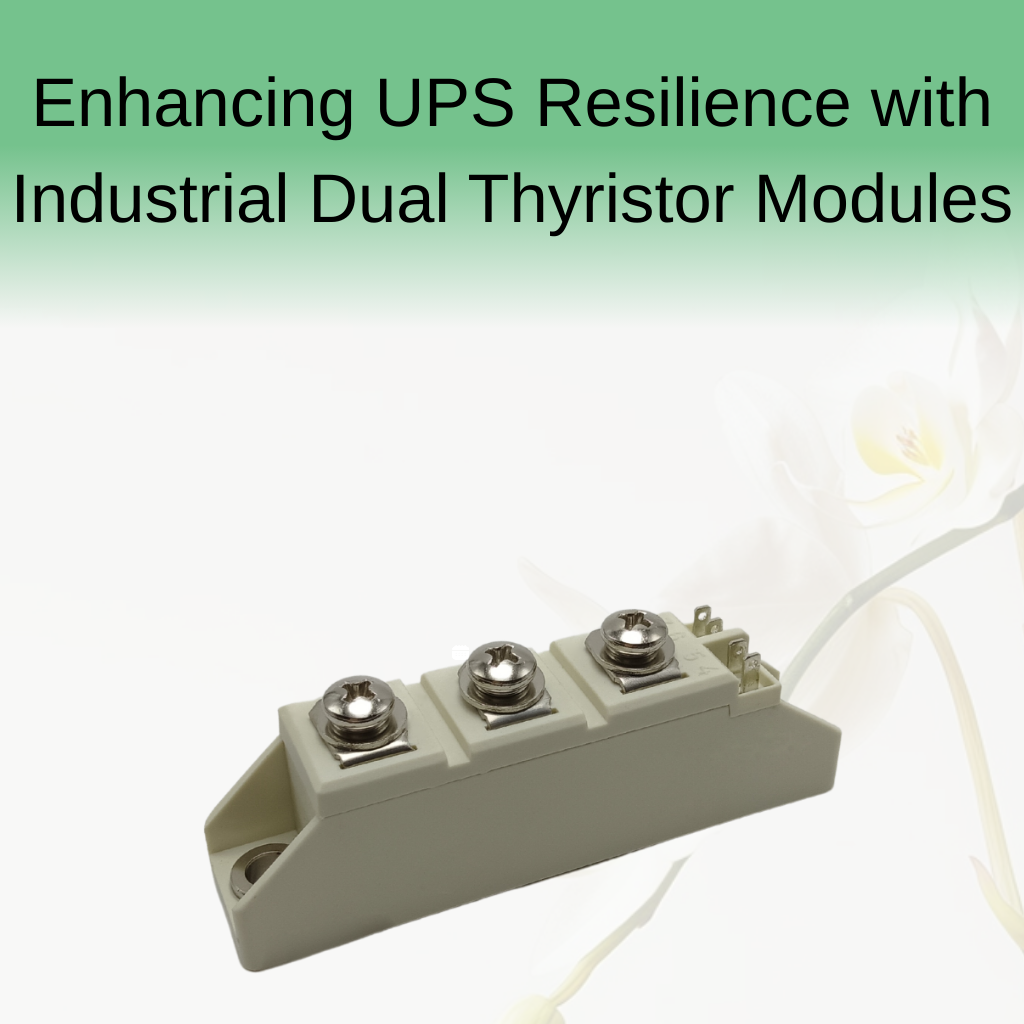Case Study: Enhancing UPS Resilience Using DCB Substrate and Dual Thyristor Modules
1. Background and Problem Statement
A large aerospace manufacturing facility experienced thermal inconsistencies within its UPS backup systems, resulting in unpredictable downtime during critical production hours. The root issue traced back to poor temperature regulation in legacy modules. To address this, engineers deployed a DCB substrate temperature control energy storage High surge current low on‑state voltage industrial phase control dual thyristor module, which combined energy efficiency with improved thermal stability.
2. Deployment and Module Characteristics
2.1 Integration of Temperature-Control Components
The facility required UPS modules that could perform in high-load environments. The DCB substrate temperature control energy storage High surge current low on‑state voltage industrial phase control dual thyristor module allowed seamless integration into existing racks. The DCB substrate offered excellent thermal conductivity, while energy storage compatibility ensured steady voltage delivery during transient surges.
2.2 Results and Adjustments
Upon deployment, the DCB substrate temperature control energy storage High surge current low on‑state voltage industrial phase control dual thyristor module reduced peak junction temperature by 27%. Temperature control fluctuations dropped by 30%, greatly extending component lifespan and decreasing cooling demands on auxiliary systems.
3. Comparative Testing with Ceramic Base Semiconductors
3.1 Cross-Test at Mining Facilities
To evaluate the solution in harsher conditions, a mining power station simultaneously tested a ceramic base traction semiconductor High surge current low on‑state voltage industrial phase control dual thyristor module. The ceramic base module proved more shock-resistant, an advantage in vibration-prone applications.
3.2 Thermal Efficiency Findings
Although the ceramic variant had a higher base thermal resistance, the ceramic base traction semiconductor High surge current low on‑state voltage industrial phase control dual thyristor module maintained stable voltage during overloads. However, cooling requirements remained higher than DCB alternatives. It was most effective in isolated installations with dedicated thermal control infrastructure.
4. Expansion into Plasma and Desalination Facilities
4.1 Industrial Energy Applications
Encouraged by the results, the dual thyristor architecture was introduced into UPS systems supporting water desalination and metal cutting. Facilities employed traction plasma cutter desalination High surge current low on‑state voltage industrial phase control dual thyristor module variants tailored for quick-start loads and rapid recovery needs.
4.2 Performance Review
The traction plasma cutter desalination High surge current low on‑state voltage industrial phase control dual thyristor module delivered consistent performance under sudden peak loads, particularly in plasma cutter cycles requiring precision voltage profiles. In desalination plants, energy efficiency improved due to the module’s low on-state voltage drop, enabling smoother phase transitions under long operating cycles.
READ MORE:
Installing 1600V & 6500V Dual Thyristor Modules in UPS Systems
UPS Installation and Maintenance: Dual Thyristor Module Guide
UPS Case Study: DCB Substrate Dual Thyristor in Energy Storage
UPS Innovation: Plasma Cutter & Desalination-Ready Dual Thyristor Modules
Industrial Use of Ceramic Base Dual Thyristor Modules in UPS Systems

